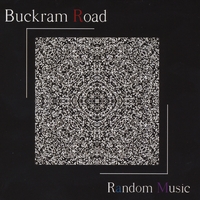So how do we solve our housing issues?
If we agree with the premise (subject to the dynamic meta-analyses we've
been preaching for the past 100 or so posts) that there is a need for more housing to keep our young workers and families here on Long Island (and to attract more professionals of all types), then let us take a simple, common sense approach to the issue.
Let's also agree that we be able to, with reasonable certainty, analyze and come to a defensible position on the who, what, where, how much, time frame (solves issue for 10 years, 20 years, 50 or more years?) and all the various environmental and quality of life concerns of the issue (I know it sounds like a lot, but it is reasonably simple to do accurate projections with the right modeling software).
Let's also agree that this issue is a shared issue amongst
all Long Islanders.
Then we can agree that a Long Island Constitution (virtual or otherwise) could, as one of its outcomes, design a plan where
all political subdivisions agree to construct (or allow to be constructed)
X number of housing units at
Y cost (sort of
Long Island Meta-Leadership concept). We should also include all New York State owned land, school district property, and all other possible locations for housing.
In short, let's take a comprehensive, inclusive, well analyzed approach to the matter and enter into a "contract" of sorts (LI Constitution) to get the job done for the future health of Long Island.
Why is this important? Shouldn't our leaders (political and otherwise) just know how to get this done?
Well, yes and no.
It is not only the responsibility of our "leaders" to get this (and all other issues important for Long Island's future) done, it is really
our responsibility.
We must give our leaders the courage and the backing to make positive change for Long Island. We must reward innovation if we wish to remain competitive as a region.
Our "leaders" don't want to be the first to go "too far out on a limb" and be perceived as causing their "
constituents" to bear an unfair share of the burden for, in this case, new housing
development. This is a perfectly reasonable and rational view.
I believe
most Long Islanders will support any effort to improve Long Island
if they believe the process is fair and equitable. Additionally, I don't think it is productive for media (and others) to slam elected officials and other leaders in isolation (or at all for that matter,
critique yes, personal attacks,
no). If there are issues to be solved on Long Island,
they are issues for all of us to solve. The media should foster cooperation while obviously fulfilling it's traditional obligation as a "public watchdog." But a good watchdog should see things that are actually there, not bark at every sound that it hears.
In the end, again, the public is its own best watchdog (see the
Citizen Media Network and Citizen Alert Network concepts on this site).
A Long Island Constitution (virtual or otherwise), based upon fair and accurate information, properly analyzed is a necessary step in solving any of the long term issues for Long Island.















































